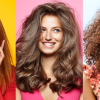Traditional Chinese Medicine (TCM) is a holistic approach to health and wellness that has been practiced for thousands of years. Rooted in ancient Chinese philosophy and cosmology, TCM encompasses a wide range of practices, including herbal medicine, acupuncture, dietary therapy, and exercises like Tai Chi. It’s a system that views the body as a small universe of interconnected systems working in harmony to maintain balance and health. In the Western world, TCM is often considered an alternative or complementary medicine, but for millions of people, it’s a way of life.
What makes TCM so enduring and appealing is its holistic approach to health. Unlike Western medicine, which often focuses on treating symptoms, TCM aims to address the root causes of ailments. It considers not just physical symptoms but also emotional, psychological, and environmental factors.
As we become more educated about the potential side effects of pharmaceuticals and the limitations of a symptom-focused healthcare system, many are turning to more natural and comprehensive healthcare options. TCM offers not just treatments for existing conditions but also preventive strategies to maintain overall well-being. This guide aims to delve into the key principles and practices of Traditional Chinese Medicine, offering a deeper understanding of its philosophy, methodologies, and applications.
So, let’s embark on this fascinating journey to explore the ancient wisdom of TCM, its relevance in our modern world, and how it can contribute to a balanced, healthy life.
- The 5 Elements of Chinese Medicine Theory: Understanding Interconnections
The 5 elements Chinese medicine Theory—Wood, Fire, Earth, Metal, and Water—is another key principle in TCM. These elements represent different aspects of Qi and are believed to correspond with various organs, emotions, and physiological functions. Understanding the 5 elements theory helps practitioners and patients alike to grasp the interconnections within the body and how different systems influence each other. This theory serves as a framework for diagnosing imbalances and prescribing treatments, whether it’s through acupuncture, herbal medicine, or dietary adjustments. By understanding how each element affects different parts of the body and mind, you can better appreciate the holistic approach that TCM takes toward health and wellness. This theory is not just a classification system; it’s a dynamic model that explains how the body’s various systems interact and influence each other, providing a comprehensive understanding of human physiology from a TCM perspective.
- Qi: The Vital Energy
Qi (pronounced “chee”) is another foundational concept in TCM. It is the vital energy that flows through the body, maintaining life and health. Qi circulates through pathways known as meridians, and any blockage or imbalance in this flow can result in disease. Practices like acupuncture and Qigong aim to regulate the flow of Qi, thereby promoting health and preventing illness. But it’s not just about unblocking energy pathways; it’s also about enhancing the quality of Qi. Various TCM practices, including dietary therapy and herbal medicine, aim to nourish and strengthen Qi, making it more resilient against external pathogens and internal imbalances.
- Yin and Yang: The Fundamental Philosophy
The concept of Yin and Yang is central to TCM. It represents the dualistic nature of existence—opposite yet complementary forces that are in constant flux. In TCM, the balance between Yin and Yang is crucial for maintaining health. For example, Yin is associated with cold, stillness, and receptivity, while Yang is linked to heat, movement, and activity. An imbalance between these forces can lead to illness. Understanding this philosophy is the first step in grasping the complexities of TCM. It’s not just a philosophical concept; it’s a practical tool used in diagnosis and treatment. Practitioners often assess the Yin and Yang balance in the body through various diagnostic methods, including pulse and tongue analysis, to determine the best course of action for restoring equilibrium.
- Acupuncture: More Than Just Needles
Acupuncture is perhaps the most well-known practice in TCM. It involves inserting thin needles into specific points on the body to stimulate the flow of Qi. Contrary to popular belief, acupuncture is not just for pain relief; it’s used to treat a wide range of conditions, from digestive issues to mental health disorders. The practice is often customized to the individual, taking into account their unique balance of Yin and Yang, as well as the state of their Qi and the Five Elements. This personalized approach ensures that acupuncture can be an effective treatment for a wide variety of ailments, providing both immediate relief and long-term benefits.
- Herbal Medicine: Nature’s Pharmacy
Herbal medicine is another cornerstone of TCM. Practitioners use a variety of herbs, often in combinations, to treat various ailments. These herbal formulas are tailored to the individual’s unique constitution and are designed to restore balance and enhance the body’s self-healing capabilities. But herbal medicine in TCM goes beyond just treating symptoms. It aims to adjust the underlying imbalances in the body, offering a more sustainable solution to health issues. The herbs are selected not just for their individual properties but also for how they interact with each other, creating a synergistic effect that enhances their therapeutic benefits.
- Tai Chi and Qigong: Movement as Medicine
Tai Chi and Qigong are ancient Chinese exercises that focus on cultivating Qi through movement, breath control, and meditation. These practices not only improve physical strength and flexibility but also promote mental clarity and emotional stability. They are often recommended as complementary therapies for various conditions, from chronic pain to stress-related disorders. The slow, deliberate movements of Tai Chi and the focused breathing of Qigong helps to harmonize the body and mind, making them excellent practices for anyone looking to improve their overall well-being.
- Dietary Therapy: You Are What You Eat
In TCM, food is considered a form of medicine. Dietary therapy involves using the principles of Yin and Yang and the Five Elements to create individualized eating plans. The aim is to nourish the body, balance internal energies, and prevent or treat diseases. This is not about following a one-size-fits-all diet but about understanding how different foods affect your unique body constitution. Practitioners often provide personalized dietary advice, taking into account an individual’s health condition, lifestyle, and specific needs.
- Cupping and Moxibustion: Lesser-Known but Effective
Cupping involves placing cups on the skin to create suction, while moxibustion uses heat to stimulate acupuncture points. Both practices aim to improve the flow of Qi and blood, and they are often used in conjunction with acupuncture or herbal medicine. These therapies can be particularly effective for conditions like muscle tension, respiratory issues, and digestive problems. They offer a different approach to stimulating Qi and are often used when acupuncture may not be suitable, such as in cases of needle phobia or certain skin conditions.
Conclusion
Traditional Chinese Medicine offers a rich and nuanced approach to health and wellness. With its focus on balance, interconnectedness, and natural therapies, TCM provides a holistic alternative to conventional medicine. Whether you’re interested in trying acupuncture, exploring herbal remedies, or simply learning about the philosophy behind this ancient system, TCM offers a wealth of knowledge and practices to improve your well-being. As we continue to explore the synergies between TCM and modern medicine, it’s clear that this ancient wisdom has a lot to offer in our contemporary quest for health and happiness.
I believe in the power of words and I think God has blessed me with the same. I have a strong experience in the area of writing and love to share my work with the readers. Happy reading!!







